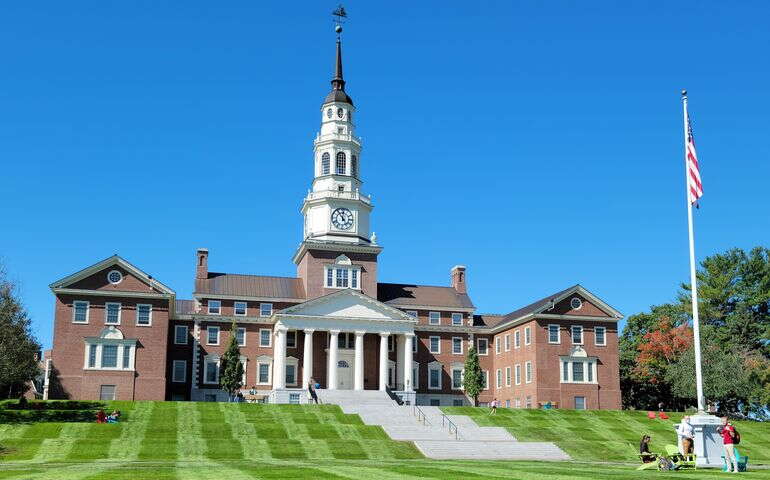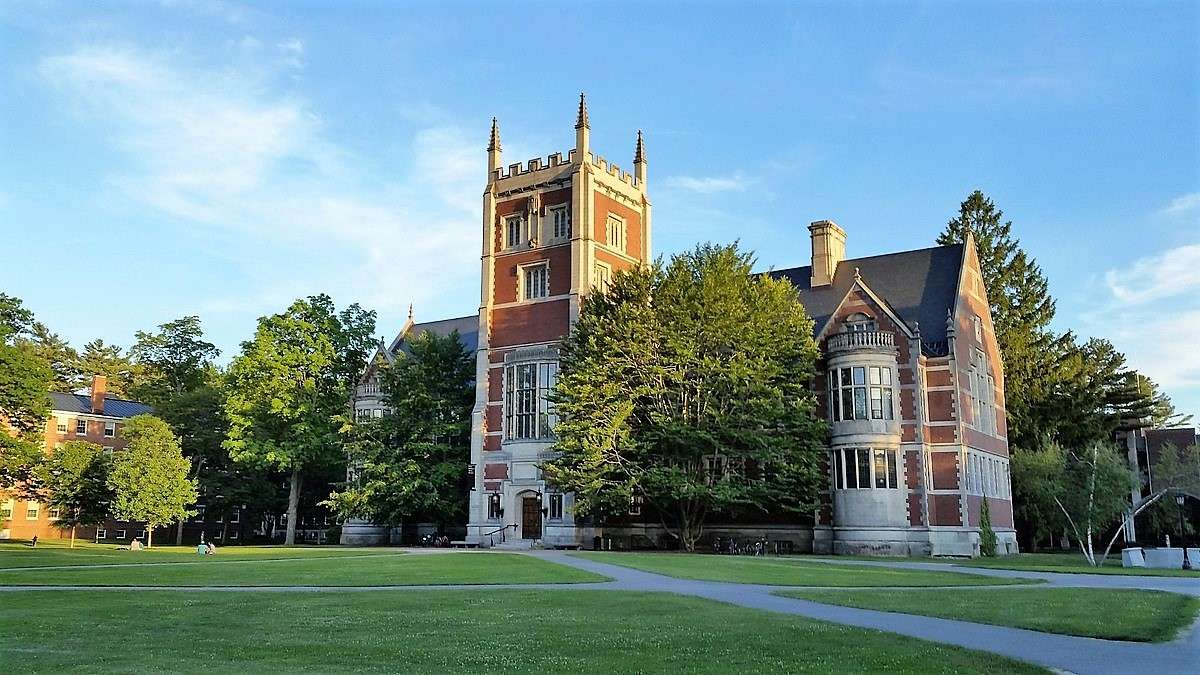
College endowments made money last year, and in Maine, some made a lot

And you thought your 401(k) did pretty well.
The size of college endowments in the U.S. soared an average of 35% during the 2021 fiscal year, a new study shows, and the nest eggs at four Maine schools beat even that impressive increase.
Two of them now each hold over $1 billion. In total, seven Maine colleges and universities are backed by nearly $5 billion in endowment funds, according to an annual survey by the National Association of College and University Business Officers.
The group last month released findings from its poll of 720 U.S. and Canadian postsecondary schools and foundations. Altogether, the participating institutions reported $821 billion in endowments.
In Maine last year, Bowdoin College’s endowment skyrocketed 52.6% to $2.72 billion, ranking it No. 54 in size and up from last year’s rank of No. 65. The endowment growth rate for the Brunswick liberal arts school also ranked No. 13 among those of all endowments.
At Colby College, in Waterville, the endowment increased 43.2% from 2020 to $1.26 billion. Colby’s endowment ranked No. 115 in size, up from No. 131 last year, and No. 41 in growth rate.
Endowment growth at Bates College and at the University of Maine beat the national average, and the University of New England and Thomas College were close behind. (See table.) Husson University also reported an endowment of $30.4 million in 2021, but did not provide data the previous year.
Altogether, the most recent sum of $4.87 billion in endowments for the seven Maine schools is nearly double the total from just five years ago.
Last year’s overall endowment growth may have been something of a fluke — in fiscal 2020, college endowments increased a paltry 1.56%, according to NACUBO. Up years are typically in single digits.
But clearly, 2021 took college endowments to a new level.
Consider this: In 2021, the endowment at the wealthiest school in North America, Harvard University, was $51.9 billion. That’s roughly equal to the total donated during the year to all the colleges and universities in the U.S., combined.
Putting dollars to use
While it’s tempting to think of an endowment as a sort of giant savings account for a school, that analogy isn’t quite right.
Endowments come from charitable donations and earnings on assets, intended primarily as a financial reserve in perpetuity. But endowments also help pay for ongoing operational costs, including student financial aid, salaries, day-to-day expenses and other needs.
At Colby, the state’s second-highest endowment covered 22% of the college’s operations budget in 2021, up from 11% in recent years. At Bates, which has the No. 3 endowment, the share has been around 12%. (Bowdoin, with the state’s richest endowment, declined to participate in this article.)
Among other things, the Colby endowment provided about $30 million last year for financial aid and $10 million for faculty salaries, said Douglas Terp, the college’s CFO and vice president of administration. The endowment even provided a financial cushion so Colby could keep paying wages when the campus shut down in the early days of the pandemic.

“The endowment is not just a big pot of money that sits there all by itself,” Terp said. “It actually translates into real impact for our students.”
That’s a message echoed by Geoffrey Swift, Bates College treasurer and vice president for finance and administration.
“Endowments at Bates are largely commitments to support financial aid, faculty and specific parts of the college,” he said. “The larger the support from the endowment, the less the college is dependent on tuition, room and board revenue.”
Swift noted that a college endowment is actually a collection of gifts, individually tracked so they meet specific objectives. At the University of Maine Foundation, a private entity that helps support Maine’s flagship university in Orono, President and CEO Jeffery Mills made the same point.
Because of UMaine’s structure, endowed funds funnel to the university from many channels, and not all are tallied in the NACUBO data. Instead of the $310 million in the report, Mills estimated the UMaine endowment to total about $440 million.
Nearly all of the funds are restricted by donors to specific uses, he said, and about 70% goes to student scholarships.

Nationally, colleges and universities spent 4.5% of their value in fiscal 2021, according to NACUBO. That level has remained essentially flat for at least a decade.
‘A remarkable year’
The 35.9% endowment growth for UMaine was a pleasant surprise, said Mills.
As the pandemic continued to wreak economic havoc, "I thought for sure we would have one of our worst years,” he said. “But we had a remarkable year, arguably our greatest year ever when you look at the market returns and what we were able to raise. I just didn’t expect it.”
Even Maine schools with modest endowments grew them significantly last year.
At the University of New England, the endowment rose 34.7%, from $39 million to $52.6 million during fiscal 2021. The UNE senior vice president of finance and administration, Nicole Trufant, told Mainebiz the endowment has been “incredibly valuable” and freed resources for uses like student aid, faculty pay and research.
Endowment growth is important for UNE, where programs and enrollment have also been growing rapidly at campuses in Biddeford, Portland and a study-abroad location in Tangier, Morocco.
But it’s tough for schools with smaller endowments to rack up increases like those of, say, Bowdoin.
The larger endowments tend to be older and can be more aggressive in their fundraising and in their investment strategies, according to Trufant.
“They can afford to absorb loss,” she said. “We’re a relatively young institution and still growing.”
The NACUBO numbers show just how much size matters when it comes to investing.
College endowments with holdings over $1 billion last year earned a median rate of return of 36.5%. At schools like UNE, with endowments between $51 million and $100 million, the median return was 27%.
Haves and have-nots
Other statistics from NACUBO also illustrate the gap between the haves and have-nots.
Last year, the average assets of a college endowment in the U.S. and Canada exceeded $1 billion for the first time. Holdings of that size now represent 84% of all the college endowment value on the continent.
The endowment value per student is also a telling comparison; schools with similar endowments can face very different financial challenges, depending on enrollment.
At Princeton University, the $37.7 billion endowment — No. 5 on the NACUBO list — works out to $4.5 million per student, by far the richest ratio among the rankees.
In Maine, Bowdoin’s endowment is equal to more than $1.5 million per student. At Colby and Bates, the numbers are in the neighborhood of a half-million.

At the other four Maine schools on the NACUBO list, the per-student ratio is less than $50,000.
And those numbers don’t tell the stories of Maine colleges with negligible endowments or none at all. There are more than two dozen accredited colleges and universities in the state.
College officials acknowledged the disparity.
“Clearly there has been some separation, even within the private liberal arts colleges,” said Terp, the Colby CFO. “Some of the [reason] is historical. You have schools that have been around longer, and enrolled students from the upper echelons of society, and they tended to build their endowments earlier than other schools.”
At the University of Maine Foundation, Mills said there is “a tremendous drop-off” in the financial resources of the state’s colleges and universities.
“That is one of the concerns I have,” he said. “As we move into the next decade, a lot of things have changed … There are going to be big questions for a lot of us. And it may be a more difficult situation for smaller campuses that are not well-endowed.”














0 Comments